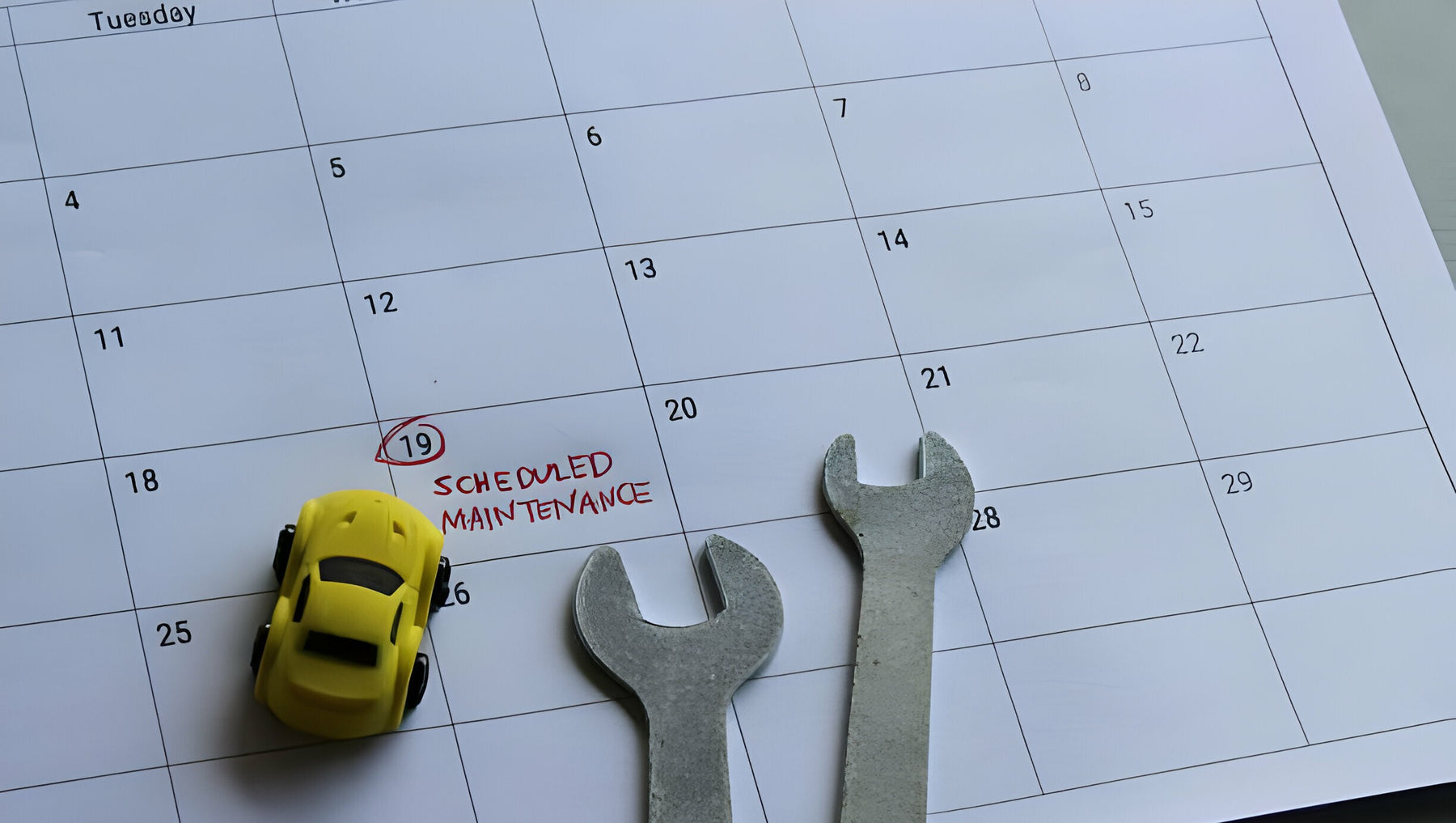
Understanding Your Car's Needs: A Guide to Following Your Vehicle's Maintenance Schedule
Every vehicle has unique maintenance needs that evolve throughout its lifetime. These needs are determined by various factors like the car's make and model, engine type, environmental conditions, and especially how and where it is driven on a regular basis. Failure to understand and follow the manufacturer's recommended schedule can negatively impact performance, reliability, and safety over time, leading to unnecessary repair costs further down the road.
This comprehensive guide examines the importance of maintaining different vehicle systems and components based on mileage, time intervals, driving habits, climate, and other usage attributes. Whether you drive a fuel-efficient sedan mostly for daily commuting, tow a heavy trailer on weekends, or use a luxury SUV off-road, taking the time to truly understand your owner's manual is instrumental to maximizing ownership value and satisfaction.
A consistent preventative maintenance routine also plays a key role in preserving resale quality and costs. Keeping detailed service records too proves diligence to potential buyers. Let's explore the specific routine care tasks, from oil changes to inspections. Understanding each system's unique requirements delivers dependable transportation economically for decades.
Engine Oil and Filter Maintenance
Most manufacturers specify an oil change every 5,000-7,500 miles or 6 months under normal driving. However, additional factors influencing service intervals include:
- Frequent idling in heavy traffic - Engines see less complete warming cycles. More frequent oil changes help flush contaminants.
- Towing/hauling heavy loads - Added stresses accelerate oil breakdown and wear on critical parts like main and rod bearings.
- Off-roading in muddy/sandy conditions - Abrasive particles embed faster in conventional oil, necessitating quicker fluid renewals.
- Cold weather starts below 20°F - Thicker multi-viscosity oils protect during engine warm-up more effectively with more regular changes.
- Elevated ambient temperatures - Components operate at higher thermal stresses, quickening oil degradation processes.
- Racing/aggressive street driving - Heavier loads mean oil contaminates faster between filter/element renewals.
By adjusting schedules based on individual factors, oil protection stays optimized for each system's unique demands.
Transmission, Differential Care
Most manufacturers recommend transmission fluid (and rear differential/transfer case fluid on AWD/4x4 vehicles) changes every 30,000 miles or 3 years. However, variables impacting fluid life include:
- Towing heavily loaded trailers frequently - Places extra strain on gearing and clutches through stops/shifts.
- Off-roading/mudding in rigorous conditions - Severe duty cycles expose components to more abrasive contaminants faster.
- Short daily commutes (under 10 miles each way) - Transmissions spend significant time idling at lower operating temperatures.
- Ambient temperatures below 20°F for winter commutes - Fluid gels up more, accelerating internal degradation processes.
- Racing/performance modifications - Bespoke transmission calibration may necessitate more customized maintenance.
Early fluid/filter renewal addresses issues before resulting in far higher rebuild costs down the road.
Cooling System Maintenance
Most manufacturers specify coolant exchange every 5 years/150,000 miles for long-life types or 2 years/30,000 miles for conventional coolant. However:
- Towing heavy trailers ups engine operating temperatures at the radiator. Additional stress accelerates coolant and hose breakdown.
- Off-roading/mudding exposes radiators and hoses to abrasive dirt/debris, reducing lifespan potential.
- Ambient temperatures below 0°F in cold climates causes more thermal cycling and stresses on hoses and plastic components.
- Short daily trips do not allow full engine warmup cycles, leaving condensation to corrode internals more.
Testing strength yearly informs timely fluid flushes to safeguard against head gasket and block failures.
Brake System Evaluation
Most vehicles recommend inspecting pads/shoes and rotors annually while replacing fluid every 2 years or as specified. Though:
- Towing heavy loads regularly relies upon optimal braking power and pad material compatibility under heavy repeated use.
- Aggressive street/track driving subjects components to increased heat cycles requiring more stringent inspection intervals.
- Mountainous regions see frequent brake applications wearing parts more quickly.
- Off-roading loosens suspension components impacting brake system alignment and pad wear.
Consistent evaluation maintains safety where frequent reliance upon braking performance matters most.
Suspension and Steering Components
Many vehicles specify inspecting bushings, joints, ball joints and tie rod ends every 30,000 miles. However:
- Off-road conditions like rocky trails subject components to excessive shocks/vibrations deteriorating parts faster.
- Winter snow/ice treatments compromise suspension rubber/grease lubricants due to road salt/chemical exposure.
- Pothole-ridden city streets inflict further damage beyond normal wear.
- Towing heavy payloads accelerates fatigue stresses requiring closer inspections.
Early problem detection safeguards vehicle control systems integral to recreational pursuits and safety missions.
Electrical System Examinations
Most manufacturers recommend inspecting ignition components every 30,000 miles. Though additional electrical/electronic considerations include:
- Aftermarket alarms, stereos and add-ons tap into factory wiring causing increased degradation from added electrical loads.
- Wiring insulation exposed to ultraviolet light outside the engine bay breaks down plastics prematurely.
- Saltwater/air proximity near coastlines facilitates corrosion compromising electrical connections sooner.
- Extended idling wearing alternators while running accessories like electric cooling fans or inverters accelerates charging system component fatigue.
Periodic inspection detects subtle issues before necessitating costly repairs or stranded breakdowns. Clean, tight connections maintain dependable performance.
Auxiliary Vehicle Systems
Some vehicle subsystems see added usage requiring customized maintenance approaches:
- All-wheel/Four-wheel drive clutch packs/viscous couplers see heavier engagement cycles off-road warranting closer inspection.
- Trailer brake/ABS/alignment systems require thorough testing to comply with regulations periodically.
- Motorsports slicks and track components undergo stresses requiring aggressive replacement schedules.
- Plow/utility truck attachments subject vehicles to shocks/vibrations shortening component lifespan potentials.
System-specific manufacturer guidance addresses recreational and duty-specific demands beyond routine schedules.
Related Article: The Importance of Preventive Car Maintenance
Considering Vehicle Needs Over Time
Understanding and adhering to your vehicle's maintenance schedule is not just about keeping your car running smoothly; it's an investment in its longevity and reliability. By tailoring maintenance tasks such as oil changes, transmission care, and cooling system upkeep to the specific demands placed on your vehicle by your driving habits and environmental conditions, you ensure that every component performs at its best. This proactive approach not only enhances your driving experience but also safeguards against premature wear and costly repairs down the line. It's a testament to the adage that prevention is better than cure, especially when it comes to the complex machinery of your vehicle.
Moreover, maintaining a vigilant and customized maintenance routine enriches your vehicle's resale value and appeal. Detailed service records demonstrate your commitment to prospective buyers, signaling that the vehicle has been cherished and well-cared for. In essence, understanding and following your car's unique maintenance needs is a holistic strategy that benefits both you and your vehicle. It's about fostering a relationship with your car where both parties thrive—your vehicle with enduring performance and reliability, and you with the peace of mind and satisfaction that comes from knowing you've optimized your automotive investment.



